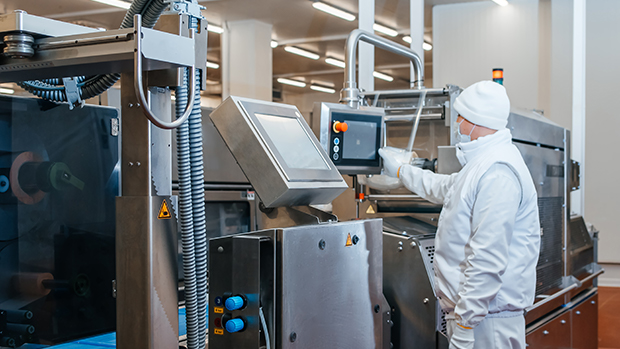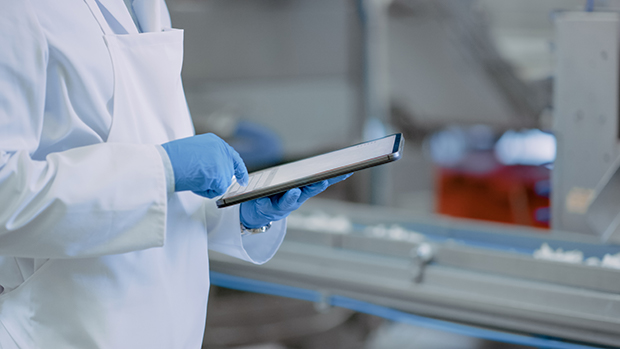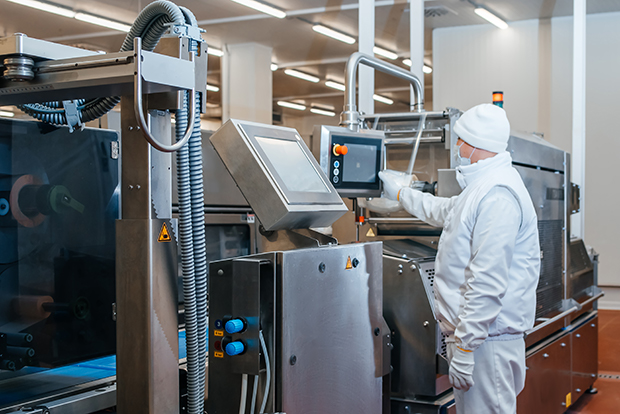Kill Line and Livestock
The Hellenic Kill Line and Livestock System controls, maintains and reports on the full kill line process. This includes making bookings, grading stations and live stock payment systems / lairage scanning.
ARAMS Export
The ARAMS Export is a web application that supports abattoirs in reporting sheep movements to the Animal Reporting and Movement Service (ARAMS) in England. On the 1st April 2014 Department for Environment, Food and Rural Affairs (DEFRA) launched a system for electronic movement reporting. According to the corresponding regulation all movements to abattoirs must be electronically reported. The ARAMS Export software aims to simplify this process by obtaining movements’ information from the Hellenic Livestock Payment System. The Application has the flexibility to retrieve the movements data (kill records) from existing Hellenic or third party livestock payment systems.
Web application consists of four main options:
- Export new movements – allows submitting new movements, retrieved from provided back-end system
- Update movements lists already submitted movements and provides options to amend or cancel them in case of a submission’s warnings
- Confirm movements – lists all movements that a farm or a market centre reported to have sent to your site
- Integration with RFID panels to record individual animal eartags (see Note *1)
Note 1: The RFID panel is connected to the Hellenic or third party Livestock payment system. The ARAMS application retrieves this data, where required, from the livestock database.
CTS Web Service
Designed to meet the requirements of the new on-line BCMS interface.
The BCMS off holding and slaughter movement files (generated from the Livestock Procurement and Payment system or Livestock Lairage Scanning system) may be automatically sent to the BCMS. The program can take any current sis file and convert it into the new format, before uploading to the BCMS via the internet and displaying any results.
The improvements in the new system are that the SIS II interface automatically returns a movement report from BCMS to the sender. The report confirms acceptance and shows any rejected movements and reasons.
The program can be set up to monitor file paths for new files and automatically process them. The reports can also be set up to be viewed or auto printed.
Eartag Terminal
The second generation eartag terminal designed for OTM & UTM compliance and interfacing with Black Box I and Black Box II. Allows scanning of cattle passports prior to kill, compiles and transmits data to the Black Box, improving efficiency of data entry at the grading station.
- Large colour LCD display and touch screen panel
- Solid state design for high reliability
- Arm risc based processor, flash memory, SDRAM
- Integrated barcode scanner
- Fixed mount or portable unit
- Optional interface with Lairage application
- Optional interface with head/hide and sample pot label printers for OTM compliance
- OTM/UTM Modes – Easily switched between UTM/OTM
- Create Lairage Lots – Enables auto-lot generation at black box
- Scan Passport – Check OTM/UTM age compliance, Transmit eartag/ D.O.B/Breed/Sex to black box.
- Category Translation – Auto generated categories transmit to Black Box.
- Generate Head/Hide OTM label transmit data to remote in-line tag printer.
- Pot – Label – Produce stem samples pot labels for LGC
Livestock Lairage Scanning
The Livestock Lairage scanning application automates control of Livestock reception, interfacing with the eartag terminal, black box and LPP application. It initiates and drives data transfer through the kill system. Designed as the kill line systems primary module it is the first reference point on arrival for Livestock compliance to OTM/UTM and factory set parameters.
- OTM/UTM Modes – Easily switch between OTM and UTM.
- Lairage Lots– The setting up of lots on the system that can be viewed by kill date & participants. Enables you to set up lots in the future for ease of use when the animals arrive in the lairage.
- Scanning Passports – In the lairage the passports can be scanned to a selected lot. All dates are automatically validated in the required mode.
- Scanning Movements – Scan all the movements for an animal so that the movement history can be easily viewed.
- Destination Calculation – The destinations can be auto generated from number of movements, breed etc.
- Category Translations – Categorys can be auto generated when the passport is initially scanned.
- Vet Ante Mortem Checking – The lots can be released by the vet so that they can continue down the line.
- Kill Schedule – A kill schedule can be easily generated for any given kill date.
- Lot Movement – Lots can be easily moved to a different kill date. If killing has started then un-killed animals can easily be moved to a different lot.
- 30 Month Report – Report showing all eartags for a lot with number of days from 30 months.
- Lairage Report – Report showing all lots with producers and expected animals.
- MHS 50 Report – Report with all carcases with entries for the MHS.
- LGC Report – Report showing all data that is also sent in the LGC export file.
- MHS Due Diligence Report – Barcodes printed for the current date to prove MHS due diligence check on both the pc and the ear tag terminal.
- LGC Export File – The LGC export file, this can also be auto emailed.
- BCMS SIS Export Files – Both the off holding and slaughtered files can be generated.
Livestock Payment System v8
Livestock Management & Procurement:
LPP is a new dynamic livestock procurement and payment system. Currently used by over 40 major abattoirs in the UK, it has proven to be reliable, flexible and fast, reducing complex animal payments and tracking time dramatically. LPP integrates with Hellenic Systems FOPS6/8 products for traceability from producer to retailer. Hellenic’s LPP system integrates all species into one package.The new version of LPP, version 8, is available for all species.
Live animal intake
- CID logging
- MAFF SIS / BCMS SIS II (CTS)
- OTM/UTM checking/seperation
- Kill scheduling
- CID logging Booking system
- Passport scanning
Kill line classification and procurement payment
- Interface to Purchase ledger
- Maff returns / MLC reporting
- Animal history
- Producer analysis
- Fieldsman analysis
- probe/grade/category analysis
- Audit trail
- Remittances
- Cheque printing / BACS
- Kill out / carriage reporting
- EID tagging interfaces
System Overview
- Multi-User
- Beef/Sheep/Pig
- Pervasive SQL database
- Microsoft Windows 2000/2003 Server
Livestock Procurement and Payment software standard features:
- Live animal intake – booking in system checks lots in against pre-programmed deliveries
- DEFRA SIS – LPP generates DEFRA reporting and BCMS SIS export files
- OTMS returns – IB OTMS documentation and EDI message files
- Kill scheduling – Determine the preset order of kill in the lairage
- Passport scanning – Scan passports at eartag terminal and check DOB, create dynamic lots and remove re-keying
- Kill line classification and payment – products BCC/SCC/PCC documents and remittance advices
- Interface to Purchase ledger – export remittance data to third party purchase ledgers
- MLC reporting – Export file for APP and Sheep pricing
- Producer analysis – How the producers animals have / are performing against set criteria
- Fieldsman/Buyer analysis – reports of performance of buyer against grades
- Probe/grade/category analysis – multiple criteria driven reports analyses your performance data
- Audit trail – records all remittance operations
- Remittances – sell billing documents in multiple styles and formats
- Cheque printing / BACS – prints cheques directly or exports for BACS payments
- Kill out / carriage reporting – carcase yield analysis and cost of transport
- Price comparisons – Compare market live weight and dead weight purchase costs
- EID tagging interfaces – Eartag terminal works with RFID animal eartags to remove scanning stag
CCS - Kill Line Management
The second generation of the famous MLC “Black box” has now been produced with an advanced colour LCD display. The new system has huge storage, performance and ease of use improvements. The Black Box II is a portable self contained classification system that can also be part of a larger networked livestock payment application.
- Black Box II is a self contained portable ‘plug and play’ system requiring only a simple dot matrix printer.
- Connects to thermal label printers to produce carcase tags.
- Interfaces with Hellenic Hospital Terminal for automatic selection of faults and processing of total condemnations.
- Interfaces with Hellenic Live stock payment software suite.
- Interfaces with Hennessy and SFK electronic fat probes. Also supports the SFK Autofom scanner.
- Also interfaces to the Hellenic Grade Display terminal for providing grade information further down the line.
- Classification reporting within system.
- Many additional reports available through the livestock payments system.
- Automatic destination (grade) selection via user programmable tables.
- Colour TFT display, touch screen keyboard.
- Fully solid state, low power electronics, no moving parts.
Stun Monitor
Designed in conjunction with the MLC, the Stun Monitor is designed to help stun equipment operatives achieve legal requirements for current and stun duration.
During a stun the TS-7000 touch screen terminal plots a graph of current against time. The graph shows green when the current is adequate and a region of the screen goes green when a high enough current has been applied for a long enough period of time.
The terminals also record each stuns data, which can be uploaded to a standard Microsoft Windows PC in real time or in batches. Terminals are capable of storing the data for around 12,000 stuns before there is a need to have the data uploaded to a PC. When uploading in real time a supervisor can monitor stuns from across the floor as they complete.
Reports can then be produced showing overall performance of the factory or reports on individual stun operatives to highlight training needs. Reports can also show if any piece of equipment is causing inadequate stuns.
Vet Terminal
Hellenic Systems Ltd have developed an abattoir based VET terminal. This systems is designed to work in conjunction with the MLC “black box” and Hellenic livestock payment systems or stand-alone. The system is based around a colour touch screen terminal which is designed to work within the abattoir environment.
The terminals records multiple animal health conditions that are observed on the kill line. These are placed into a database held on a local PC or networked fileserver. From this database, historical reports can be produced to show trends of conditions within a given producers animals. The system has been designed to work with all species and can record to lot or individual carcase levels (in the case of cattle).
Where the Hellenic Livestock payment systems are available, the VET terminal links into the existing systems so that lot information (sequence of kill) is available. This removes the requirements to record slaps or other identifiers at the terminal. This data is then added to the Livestock system so that animal health data can be returned to the producer along with the remittance and classification data.
All diseased and body part information are programmable within the terminal so that the level of detail can be controlled by the user. The system can store VET records in the case of the host system failing.













